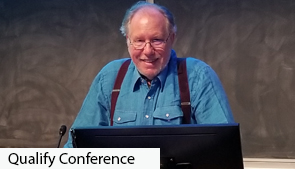
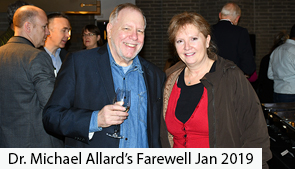
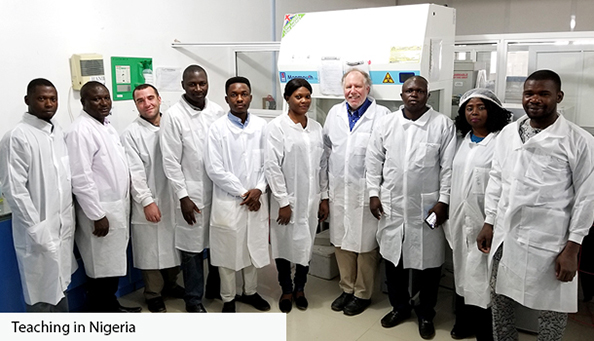
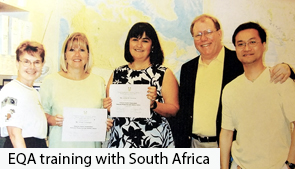
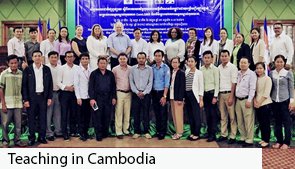
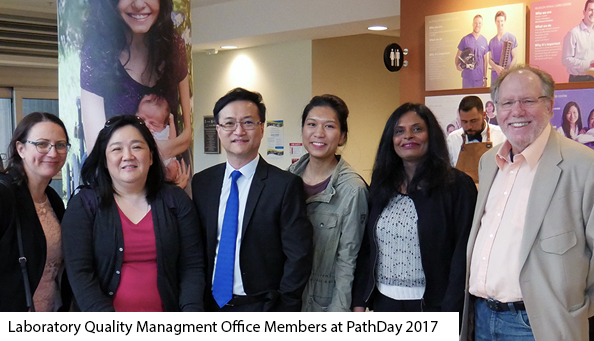
Clinical Microbiology Proficiency Testing Founder
I and my family had just moved to Vancouver at the beginning of June, from Halifax to help develop the Microbiology Laboratory at the just recently opened UBC Hospital. I was discovering new colleagues, and new challenges, when my mentor and friend and Head of the Departmental Division for Medical Microbiology, John Angus Smith invited me to a meeting to discuss a new initiative. He told me that Vancouver and the Lower Mainland and Vancouver Island microbiology laboratories were having a major problem because border security services would no longer allow microbiology proficiency testing samples from the College of American Pathologists across the Canada-US border. The only alternative was to create, similar to what Ontario had done, an in-province microbiology proficiency testing program to serve the needs of Vancouver, North Vancouver, Richmond, Victoria and Campbell River. He (and Charles Ford and Robin Barteluk) had organized a new program called Clinical Microbiology Proficiency Testing (CMPT for short) and now wanted me to take over the organization and management of the program. I had a sparingly few ideas about proficiency testing, but knew enough to jump at the opportunity.
Working from the basic principles that Proficiency Testing (PT, or as it is now referred to as EQA) samples should look like and act like typical samples, and that contaminating samples designed for Quality Control is a bad thing to do, we started sending out samples to the target laboratories. After a year or so, the College of Physicians and Surgeons requested that we extend the program to all microbiology laboratories in the Province. And a few years after that we were asked if we could provide samples to the microbiology laboratories in Atlantic Canada as well as Manitoba, Saskatchewan, and Alberta.
In less than 15 years we had gone from nowhere to a cross Canada network, linked through annual conferences and our CMPT Clinical Bacteriology Advisory Committee.
We learned as we went along, and then started having annual meetings with the PT programs in Ontario and Quebec, and created a cross Canada PT coalition. In less than 15 years we had gone from nowhere to a cross Canada network, linked through annual conferences and our CMPT Clinical Bacteriology Advisory Committee. To this day, our Annual General Meeting brings together Medical Microbiologists, Scientists, and Technologists from 6 provinces to discuss and make plans for CMPT Microbiology EQA.
New Initiative: International Organization for Standardization (ISO)
In 1993 I was attending a meeting of NCCLS (now called the Clinical and Laboratory Standards Institute or CLSI) on antimicrobial resistance, and the chair said that the organization was going to be involved in this new initiative to develop a Quality standard for medical laboratories and they were looking for volunteers. That seemed to be a natural next step of CMPT and so I volunteered, but was told that I could not participate because I was not an American, and if I was really interested I would need to work through our Canadian standards agency, which I pursued and discovered was the Standards Council of Canada (SCC) in Ottawa. They were aware of this new initiative but were not particularly interested, but if I wanted to organize something they would not interfere. So I rounded up a committee of laboratory colleagues, sought out some funding, and attended the inaugural meeting of the International Organization for Standardization (ISO) Technical Committee (TC212) in Philadelphia and was able to start work on what turned out to be the ISO standard I5189:2003, Medical laboratories - the particular requirements for quality and competence. Our committee, by this time being supported by Canadian Standards Association set out to have ISO15189 recognized as the Quality standard by all provinces across Canada. It took a long time, but ISO1518:2012(now) is now recognized as the single essential Quality Standard for medical laboratories across Canada and in 74 other countries around the world.
One of the interesting by-products of being on the ISO Technical Committee was that I met Dr. Joe Boone of the Centers for Disease Control and Prevention in Atlanta. Joe had been one of the primary crafters of the Clinical Laboratory Improvement Act (CLIA) the legislated Quality standard in the US. I was asked to join Joe and the Division of Quality Systems at CDC as an “intermittent expert”. As a result of that collaboration, we were able to host an international conference on PT known as Global Odyssey, a meeting of some 2500 people from 60 countries. Of interest the meeting was first proposed to be held September 14, 2001, but life intervened and the meeting was held a year later.
On one occasion, again with CDC we were able to host another mega meeting this time on the subject of laboratory quality management. The skills learned through these meetings led to hosting a series of smaller but still significant, October Quality Conferences here in Vancouver, each with its own cross country and international audiences.
Outreach Training Program
Through the associations with CLSI and CDC and the US President’s Emergency Program for AIDS Relief (PEPFAR) I was asked to develop an outreach training program to help laboratories in Tanzania improve their laboratory quality. By 2016, five laboratories achieved accreditation to ISO15189.
In that summer I was asked to talk at a laboratory technologist conference when a very angry person stood and said that both BC’s Diagnostic Accreditation Program (DAP) and CMPT were frauds because they (we) demand that laboratories meet certain specific requirements, but we (both DAP and CMPT) did nothing to validate our authority. I realized that she was absolutely correct and we would do something about that. At the time the only appropriate international Quality standard that existed was ISO9001:2000 (Quality Management – Requirements). We got ourselves a Quality Consultant, and an international certification body (QMI) and by 2003 we were the first PT/EQA body in North America to seek international recognition and validation. Today we continue with our annual inspections, now by Standards Australia International – Global, and have supplemented the experience by meeting additional requirements with the international standard ISO/IEC 17043:2010 (Conformity Assessment – Requirements for Proficiency Testing) working with our accreditation body American Association for Laboratory Accreditation (A2LA). No one can dare say that we do not take our own accreditation, quality and validation seriously.
UBC Program Office for Laboratory Quality Management as a Virtual Classroom On-line Education (VCOLE)
The second event was that I was asked to write a book for Canadian Standards Association on understanding ISO15189. One of the requirements of the standard was that medical laboratories should have a person dedicated to laboratory quality, named as the Quality Manager. The problem was that few in Canada really understood the standard and had little idea about what a Quality Manager would do. I realized that I actually had that knowledge, and after a long conversation during a trip to Seattle, I came back and with the help of Charles Ramey set up the UBC Program Office for Laboratory Quality Management as a Virtual Classroom On-line Education (VCOLE) course to teach laboratorians about Quality. The course was a near instant success and within a very short period of time people were taking the course across Canada, the United States, the Caribbean, Asia, and the Middle East. The course continues today and is just as successful. Today we continue to have the on-line course, but also have given the course on-site in Zambia and Cambodia working through the International Training and Education Center for Health (I-TECH) of the University of Washington.
Educational Outreach
The third event was an outgrowth from Global Odyssey, when we learned that many countries (now called Lower and Middle Income Countries) were interested in starting their own path towards Quality but did not know how. By inviting countries to send laboratorians here to UBC for 2 weeks we could provide them with PT/EQA training to help them set up their own programs. Over the years we have had delegations from South Africa, Zimbabwe, the United Arab Emirates, China, Thailand, Turkey and Belgium. We developed a partnership with another program in Vancouver (Oneworld Accuracy) to broaden the training. Today we are taking the training out of Vancouver and doing it in their own countries. This educational outreach over the years has led to opportunities with the World Health Organization, the African Society for Laboratory Medicine, and the European Organization for EQA in Laboratory Medicine (EQALM).
Today as I look back at that meeting in 1983, I think of all that has happened.
Today as I look back at that meeting in 1983, I think of all that has happened. This was not the career that I had planned or envisioned, but it has given me the opportunity to help frame the international basis for laboratory quality, to have trained Quality Managers around the world, and to help countries develop their own laboratory quality assessment programs.
Someone once said that university activity is like a three-legged chair with the legs being education, research, and community outreach. I have had the opportunity to be actively involved in all three.

